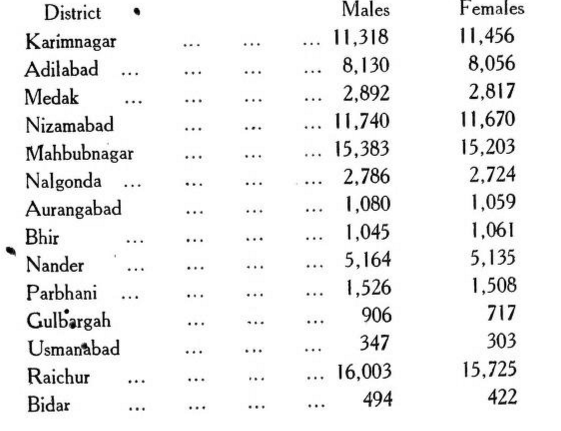Machinde Bhois: Deccan
Contents |
Machinde Bhois
This article is an extract from THE CASTES AND TRIBES OF H. E. H. THE NIZAM'S DOMINIONS BY SYED SIRAJ UL HASSAN Of Merton College, Oxford, Trinity College, Dublin, and Middle Temple, London. One of the Judges of H. E. H. the Nizam's High Court of Judicature : Lately Director of Public Instruction. BOMBAY THE TlMES PRESS 1920 Indpaedia is an archive. It neither agrees nor disagrees |
General Description
The Machinde Bhois are mostly fisher- men, but are also engaged as palanquin bearers and domestic servants. The females soak and parch grain. The members of the caste use donkeys for carrying burdens and are hence looked down upon by the Telugu Bhois. The Maratha and Machinde Bhois occupy the same social rank among the Maratha castes as the Telugu Bhois do among the Telugu caste. They eat the flesh of fowl and sheep and drink spirituous and fermented liquors, but abstain from beef and pork.
Manners and Customs
In the Adilabad District, especially in the Talukas of Jangaon, Rajura and Shirpur, Marathi-speaking Bhois are found, but these are entirely distinct in their manners and customs from the Maratha Bhois of the Marathawada Districts. It appears that the former are the descendants of those Bhois who came with the Maratha conquerors, settled with them in the Berar and Nagpur provinces and subsequently emigrated to the neighbouring territory in H. H. the Nizam's Dominions. They are divided into two sub- castes, Bendore and Bhanare, who are said to eat with each other but not intermarry. These are broken into exogamous sections, which consist of family names resembling those of the local Maratha Kunbis. A man cannot marry a woman of his own section. He may marry the daughter of his mother's brother or his father's sister and two sisters may marry the same man, provided the elder is married first. Both infant and adult marriages are practised by the caste. Sexual inter- course before marriage is tolerated, but punished with a small fine. If, however, the girl becomes pregnant before marriage, she is required to disclose the name of her seducer, who is compelled to marry her by the caste council. Polygamy is allowed.
Marriage
The marriage ceremony takes place towards sun- down, at the bridegroom's house, to which the girl is escorted in procession on horseback by her people. Under the marriage booth is a circular platform built of earth with a post of salai (Bostcellia thmijera) planted ^jn the centre. This central post is surrounded by earthen vessels, and the bride- groom facing the east and the bride facing ,the west, with the post in their middle, are wedded by a Brahman priest. A man of the washerman caste provides threads for marriage bracelets, which are tied by the bridal pair on each other's wrists. On the third day, the bridegroom dressed in the bride's clothes and the bride in the bridegroom's are paraded in procession, after which they are mounted on the backs of their respective maternal uncles, who dance to the accompaniment of drums and go five times round the earthen platform. The ' bride-price ' to the amount of Rs5, is paid to the girl's father. Re-marriage of widows is permitted and celebrated on a dark night of any month. Women are divorced and are subsequently allowed to marry again by the same rite as widows.
Religion and Funerals
Khudbhan, the favourite; deity of the caste, is worshipped every day. The other deities honoured are the god Mahadeva of the Hindu pantheon and the animistic deity Pochamma, who presides over smallpox. The spirits of ancestors are also propitiated. The dead are either burnt or buried. When a person is on the point of death, ambil, or gruel, is poured into his mouth. Mourning is observed for 5 days. No Sradha ceremony is celebrated, but an image of the deceased is embossed on a meta[ plate and installed in the god's room.
Social Status and Occupation
Their social position may be determined by the fact that they will eat from the hands of the Kunbis, Malis, Dhangars and Kumbhars, while the Kunbis will accept water only, but nothing else, from a member of the caste. The members of the caste eat the flesh of goats, sheep, fowls, hares, deer, scaly and scaleless fish and great lizards and drink spirits. Their hereditary occupation is fishing, palanquin bearing and working as domestic servants. Some of them have taken to cultivation. They have a caste Panchayat to which social disputes are referred.
Distribution
The following statement shows the number and distribution of the Bhois in 1911 : —

